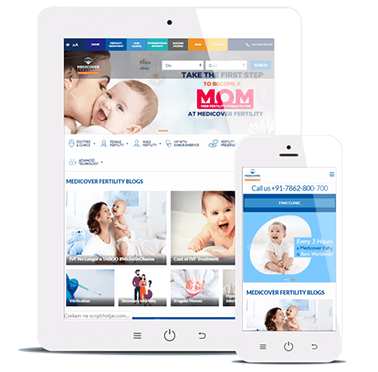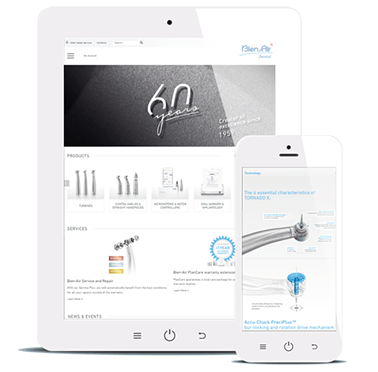Web applications development
Our team uses cutting-edge technologies and advanced programming techniques to create responsive, reliable, intuitive web applications.

We are aware that in the rapidly changing digital world, web applications are vital for businesses in all industries and sizes. They can improve your organization's functionality, strengthen customer loyalty, and expand your online presence.
And, unlike the trafitional desktop version, the web application does not require installation on the user's device. They can be accessed through any browser, facilitating the transfer and processing of data bettween the browser and the web server.
Our years of experience have taught us that close collaboration with clients is essential to achieving our shared goals. That is why, at our web app company, we prioritize meeting the expectations and needs of our customers above all else. The web application development services follow the same principle.
The ensure you benefit from such platforms, our web application company team employs efficient, secure technologies and progamming methods, creating responsive, reliable, easy-to-use web applications.
As one of the most experienced web app development companies, we pride ourselves on staying abreast of the latest trends and advancements. Our commitment to excellence is evident in our web app development projects. Projects that not only meet but exceed industry standards.
If you are interested in exploring how web application development services can benefit to your business, contact us. Our team of experts is always available to answer any questions.
Web applications development services - how does the process look?
A well-structured process for developing web applications is crucial for achieving successful outcomes. It also helps identify and resolve potential problems or challenges at different process stages. That ultimately leads to significant long-term savings in time and resources.
Although the development of web applications can vary depending on the specific implementation, it typically involves six fundamental phases.
- Planning – during this process, our web application agency, define the objectives and features, identifies its users, establishes the business and technical requirements, and determine the implementation and support methods.
- Design – in this stage, we work on the design aspect of the application. That includes selecting the most appropriate technologies and tools based on the requirements and functionalities needed. Additionally, we prepare the graphic design of the user interface to ensure a seamless and user-friendly experience.
- Testing – thorough testing is necessary when developing an application to ensure its proper functioning and compliance with all functional and technical specifications. The client can evaluate the initial version, determine whether it meets their requirements, and identify any additional features that may be necessary.
- Implementation – once the tests have been successfully completed, the application is introduced into the server and becomes accessible to the public.
- Support – the process's final and crucial aspect is providing ongoing support, ensuring the application is well-maintained, and adding new features.
Of course, many factors can affect the process of creating web applications. The most common are:
- Size of the project implemented technology,
- Organisation of teamwork,
- Budget and schedule of the project,
- Client needs
Recognizing the Client's crucial role in web app development is fundamental. At Ideo Software we collaborate closely with our partners at every stage to ensure that we are progressing in the right direction. That is why choosing our web app development services is the key to unlocking the full potential of an organization's digital presence.
From the initial conceptualization to the final deployment and beyond, we walk hand in hand with our clients. Importantly, we do more than just offer web app development services. Rather, we provide a holistic and tailored experience that considers our client's input at every turn.
As one of the leading web app development companies, we offer the assistance of qualified professionals, who leavarge cutting-edge technologies and industry best practices, turning customers' visions into reality and guaranteeing succesful outcomes.
Web app development services – The most important benefits of implementation
As organizations increasingly recognize the significance of a robust online platform, the intrinsic benefits of web application development services and adequately designed software become paramount. Some key highlights of implementating such apps include:
- Easy introduction – does not require installation on individual devices. Lower server load – thanks to a properly created structure, it is possible to reduce the load, thus improving web application functioning.
- Scalability – as more users begin to use the website, we can allocate extra functionalities to the server to manage the added workload.
- Conversion improvement – it is so user-friendly that the customers are even more willing to decide between about buying or cooperation.
- Compatibility – web apps can be developed to work on many different devices (including desktops, laptops, tablets and smartphones). It is enough to have access to web browsers.
As you can see, web app development services and implementing accurate designed software offer many benefits, including an improved user experience, reduced server load, and customisation.
From a business perspective, web application development solutions are great for optimizing costs, as they eliminate the need for separate teams to manage both the web version and the application.
Furthermore, they enable faster and more economical acquisition of new users. Compared to traditional mobile apps, web apps do not provide problems such as long update times or app store downloads. This immediacy enhances user convenience and expands application reach, making it more accessible to a broader audience.
Web application integration - what can you expect?
As part of our web app development services, we provide integrations that involve linking various applications or services to ensure seamless and convenient operation. Application integration affects every aspect of your business. It is often associated with e-commerce, online marketing, content management systems, CRM, ERP, e-learning, data analysis, API integration, and more.
Which web application integrations are worth doing?
- Business processes using a single IT system (automation and coordination of business processes in different applications)
- Applications running on different system platforms
- Features, functionality and accumulated knowledge contained in many applications
- Internal resources of the company with its environment (internet, extranet)
- Databases (synchronisation and transfer of data between different applications)
Web app integrations with systems
There are various technologies and systems available for integrating web applications. Common ones include SAP, IFS, ORACLE, TecDoc, Vendo, Wapro, Trawers, Lotus Notes, SharePoint, Perdix, Hermes, Subiekt GT, Navireo ERP and others.
Differences between a web app and a website
At first glance, web apps and websites may seem similar or even the same – you can use them both through a web browser. However, there are notable distinctions in both their functionality and purpose.
A website is a collection of web pages connected under a common domain name. They usually contain informative and image-centric content, introducing users to a business, product or service.
On the other hand, web applications are programs accessed through a web browser, specifically designed to perform specific tasks. Unlike websites, they offer an interactive and dynamic user experience, with applications ranging from e-Commerce to social networking and project management software.
Throughout our business journey, we have had the pleasure of partnering with numerous enterprises provifing both website and web application development services at the highest efficiency level. If that is the assistance you need, contact us. You can rest assured that your software will be in good hands.
- How much does it cost to create a custom web application?
The expenditure involved in developing a bespoke web application is contingent upon a multitude of factors, such as the intricacy of the design, the desired functionalities, and the scale of the application. At Ideo Software, we adopt a personalized approach, considering each project’s unique requirements and ensuring that our clients receive a fair and accurate assessment of the costs.
- How long does it take to develop a web application ?
The timeline for developing a web application can vary depending on the project’s scope and complexity. Factors such as the desired features, functionality, technical requirements, feedback processes, and collaboration all play a crucial role in determining the project’s duration.
However, we aim to streamline our development workflow for efficient and timely results. That is why we also conduct a thorough pre-implementation analysis that facilitates a more accurate estimation of the project timeline, helping to anticipate and address potential challenges early in the development process.
- Can you help me improve my existing web application ? Naturally, we can assist in enhancing your current web application. At Ideo Software, we specialize not only in developing new systems but also in seamlessly taking over and improving existing ones. Our expertise includes performance optimization, feature additions, and enhancements to ensure your web application stays current with the latest industry standards and exceeds user expectations.
- What services are included in web app development ?
Web application development involves various services, including requirements analysis, design, coding, testing, and deployment. Our team specializes in full-stack development, which ensures a comprehensive approach that covers both the front-end and back-end aspects of the application, as well as database integration and user interface design.
- Do you provide support after developing a web app? Indeed, our team offers post-development support services to ensure your application’s uninterrupted and seamless operation. We prioritize addressing any issues and implementing necessary updates to maintain the functionality and security of your web application.
- What is the difference between web application development and website development?
The web application development process entails the creation of dynamic and interactive platforms that perform specific functions or tasks, necessitating intricate coding and database integration.
In contrast, website development aims to construct static or content-driven sites, typically with informational or promotional objectives.
- What are the different types of web apps?
Web application development encompasses various applications, including e-commerce platforms, content management systems, e-learning platforms, and customer relationship management systems, designed to cater to specific business or user needs.
- What technologies are used to create a web app ?
Web applications are developed through the integration of various technologies. The common ones we work with daily are PHP, Node.js, .NET Core, Flutter, and React Native.
- How can I optimize a web app for SEO?
The process entails implementing best practices to enhance visibility and search engine rankings. Those involve, among others, content optimization, the use of descriptive URLs, the incorporation of relevant keywords, and ensuring mobile responsiveness.
However, we assure you that we will take care of all these aspects to ensure your web application is perfect for SEO.
- Why do businesses need custom web app development services?
Custom web application development services are crucial for businesses that seek to address specific needs through tailored solutions as they ensure the development of a more efficient and scalable system.
By leveraging such, companies can achieve higher flexibility and agility in their operations, leading to improved performance and increased profitability.









